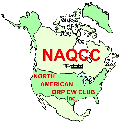
 | NAQCC News |
| May 14, 2011 | NAQCC Web Site | Issue #142 | |
|---|---|---|---|
|
In this issue: 1. May Sprint. 2. April Challenge Results 3. General Club News 3a. Chapter News 4. Elmer Project 4a. NAQCC QRS Nets 5. CW Cartoon of the Month 6. Member Spotlight 7. News Items and Articles by Our Members |
| 1. MAY SPRINT: With our sprint coming just a few days before Dayton, this may be the sprint that breaks our streak of 100+ logs sprints. We hope not, but if it happens we won't be all that disappointed as it will be for a good reason. Don't forget if you do go to Dayton early, you can still get in the sprint portable from there. A couple of hams asked about that and it's perfectly OK to operate portable. The sprint is this coming Wednesday evening at 8:30P EDT, 7:30P CDT, 6:30P MDT, 5:30P PDT which in all cases converts to Thursday 0030Z and lasts for two hours. I hesitate to say this, but perhaps with probably many of the top sprinters going to Dayton and maybe not all of them getting in the sprint, this might be a good opportunity for someone who has never participated in our sprints to jump in and come up with one of our beautiful certificates or even the prize we give away in each sprint. Shhh, don't tell anyone I said that. Every month we do get many folks enter our sprints saying it's their first venture into any kind of ham radio contesting. Most of them find out they enjoy such activity, and become regulars in our sprints. Some even go on to other contests and sprints. So do try it. You'll never know if you like something or not till you try it. Being low-key, slow paced sprints, ours are an excellent testing ground for newcomers. Even the many veteran contesters/sprinters who enter will slow down for you if needed. Don't be afraid to ask them. If you ARE thinking of entering one of our sprints for the first time, another thing to remember is that we have a nice certificate for the first-time log-submitting member with the best score. We have also picked up again on our sprint prizes of WB8LZG's paddle handles and knobs thanks to another generous donation of the handsome hand-crafted items by Gregg. We deeply appreciate Gregg's generosity. They go to the winner of a random drawing among ALL participants except those who have won previously. Take a look at the Prize page in the main section of the web site to see what they look like if you don't already know. Remember to be sure to read and understand the full general sprint rules and any specific rules for this month's sprint here. 2. APRIL CHALLENGE RESULTS: With the improving band conditions, it is becoming easy to complete our challenges using only DX calls. I say that because there seems to be a better and wider variety of letters in DX call signs for our alphabet challenges. Especially with all the very loooong special event DX calls like OM2011IIHF, RP66MSK, 4A0IARU and so forth. What I've been doing is to complete the challenge as quickly as possible using both domestic and DX calls, then seeing if I can change the domestic calls to DX calls before the end of the month. It has been easy to do so. But there is no extra credit for doing a challenge with DX calls, and no requirement for doing so. It's only like a challenge within a challenge to do so if you feel up to it. For our gardening challenge in April, we had (I believe) 3 ops who used only DX calls and 2 others who only had a couple A/K/N/W calls listed. We also had entries from 4 countries which I think is a first - USA, Canada, Netherlands, and Asiatic Russia. Strangely 6 hams couldn't make all the words vs. 5 who did make them all. The letters S and R seemed to be the Achilles heel for some, while with the nicer weather here, a lack of time slowed others. Full Challenge info here. 3. GENERAL CLUB NEWS: Do your best to sign up new members to the club and add to our ever growing pro-CW/QRP voice. Remember promoting CW at QRP levels is the best possible way to promote this wonderful mode of communication. You don't need high power to make contacts with CW. I'm sure you're proud enough of the NAQCC to want to sign up members without any incentive, but just in case we are going to award some kind of prize to the one who signs up the most new members at Dayton. When you sign someone up, just point them to the web site at our easy to remember URL of naqcc.info and tell them to list as the source in the application form your call letters and /Dayton as in K3WWP/Dayton in my case. Have fun. I wish Tom and I could be there to meet you. However Tom and I will be in Butler for their hamfest in early June. More details on that in the next newsletter. The guidelines are very simple. All you do is operate normally, but use the special event call instead of your own. Period. Put in whatever amount of time you can from 1 hour up to the full 168 hours, although I wouldn't advise that. HI The human body does need its rest. Each of the ten call areas from W1 through W0 has its own special event call as noted above. The operators in a call area co-ordinate their on-air times among themselves. Sound interesting? Contact us via email at Remember conditions will be the best they have been for any of our previous anniversary celebrations with the Sun finally coming alive this year. It should be a real bang-up celebration. Don't you want to be a part of it? If so, let us know as soon as possible. So far we only have 4 ops expressing interest, and all in the 3rd call area - K3WWP WY3H N3ES KC2EGL. We definitely need to get that list growing NOW. 3a. CHAPTER NEWS: Here is where our club chapters present news about their chapter activities. We currently have three chapters - European, Minnesota, and Texas. We're looking forward to expanding that roster. Chapters are more or less independent local gatherings organized by members in a geographical area and subject to a list of guidelines under the auspices of the NAQCC. If you would be interested in starting a chapter in your area, let us know and we'll send a copy of the guidelines. NAQCC EUROPEAN CHAPTER:  Items in this section are from EU Chapter President Matt MW3YMY unless otherwise credited. Questions or comments should go to The EU Chapter web site is at http://www.naqcc-eu.org/ NAQCC MINNESOTA CHAPTER: 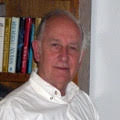 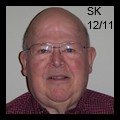 Items in this section are from Chapter President Rich WD0K (L) and/or Keith K0HJC (R) unless otherwise credited. Questions or comments should go to The Minnesota Chapter web site is at http://www.naqccmn.com/ Greetings from the Minnesota Chapter! Spring is finally here! Everyone is heading different directions for the spring events. Merlin, KD0V, is on the Gunflint Trail in the Boundary Waters with his K-2. Keith, K0HJC is valiantly trying to work the 10-10 Spring CW Contest as a QRP entry. Bob, K9OSC is checking out his homebrew portable antenna. We haven't heard who is planning on attending the Superior Hamfest; if someone did go, please E-mail with a play-by play. Do you have any other QRP plans for the summer? Let us know at K0HJC@ARRL.NET. With spring here, thunderstorms are not far behind, and they always seem to occur on sprint evenings. Time to finish that indoor folded dipole for 20 meters! We are still looking for responses to our request for input regarding interests and possible activities. If you have an activity that intrigues or interests you, please let us know, again at at K0HJC@ARRL.NET. Please feel welcome to join us for Brunch and/or rag-chew. Our next brunch is Friday, May 20th at R. J. Riches in Mounds View. Sideband rag-chew is still at 1400Z on 3.707 Mhz. Visit our Minnesota Chapter Website at http://www.naqccmn.com/ for more details. NAQCC TEXAS CHAPTER: 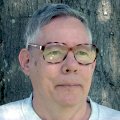 Items in this section are from TX Chapter Director Ron K5DUZ unless otherwise credited. Questions or comments should go to The TX Chapter web site is at http://www.naqcctx.com/ A big "yahoo!" to our new net manager, Dan, AF4LB. Thanks for pitching in and helping out Dan! The East Texas QRS Net (ETN) is meeting each Monday evening at 1900 CDST (2400 UTC) on 3564.5 KHz. There were four check-ins from three states last Monday night. Our thanks to all who took the time to check into the net! 80m is still "hanging in there", but a change to 40m will happen soon. Watch for the next NAQCC Nets e-mail for the latest information. The ETN net will QSY up a bit for QRM so be sure to tune around. The ETN is open to all hams regardless of QTH, so check in for a little CW practice or to show your support for the net. The Net Control Station (NCS) is Allen, KA5TJS. He will reply to you at the speed you call him, so don't be put off by stations sending faster than you can comfortably receive. You will be among friends, so give it a try! Until next time, start planning your QRP CW portable operation during the ARRL Field Day event! You can find the NAQCC Texas Chapter website at http://www.naqcctx.com/. 4. NAQCC CW ASSISTANCE PROJECT:  Items in this section are from CW Assistance Project Coordinator Ron K5DUZ (L) unless otherwise credited. If you are interested in helping out or need help with any CW and/or QRP matters contact: K5DUZ - Elmering opportunities have been at a low ebb since the previous newsletter. Gee, perhaps everyone reading this column has used the Koch method to achieve 15 wpm? Seriously, I would like to hear your success stories. Also, if you've hit a rough spot and found a way to overcome it, I'd like to hear how you did it. Any feedback you can provide to me will be used to help other future CW addicts. Please send me an e-mail if you are having problems with any aspect of learning CW or improving your speed and I'll try my best to help you. If you would like to volunteer to be a Practice Buddy or would like to work on-the-air with one, please let me know your preferences. Now back to our discussion of learning and becoming proficient with Morse/CW. Once you can copy 15 wpm CW reasonably comfortably you will want to begin to work on increasing your receiving speed to at least 20 wpm as most CW QSOs take place in the 15 to 20 wpm speed range. You've made a great start and you are "over the hump", but the journey to master Morse/CW must continue!. As always, practice, practice, practice is our mantra, but we need to practice in the most efficient way. Rather than grind away, gradually increasing our receiving speed, we can make a jump directly to 20 wpm. If you were a "slow coder" and made the transition to 15 wpm using the Koch method, you will no doubt remember what a shock listening to 15 wpm CW was to you. Jumping from 15 wpm to 20 wpm will again be something of a shock, but you will quickly notice that you can copy many letters and even some words at 20 wpm. You will just miss sequences of letters until you get "synced up" again when you recognize another letter or word. One thing you should notice is that copying words as "word sounds" is easier at 20 wpm because the word sound is shorter and thus easier to recognize. This jump directly to 20 wpm from 15 wpm is a shock to our brains, but it will rise to the challenge and adapt to the faster speed. As always, the transition takes time, so be patient and practice as consistently as possible. You can go back to practicing using the Koch method with your CW practice program and practice receiving the letters that cause you the most problems.. As you did previously, spend time "copying in your head" as this enables "copying behind". Also, practice your common words. You will soon notice that 15 wpm doesn't sound as fast as it previously did. That is one indication that your brain is adapting to the 20 wpm challenge. You will also notice that writing down characters and words at 20 wpm by printing is a real challenge. I quickly learned to mix printing with cursive writing in order to minimize the workload. I think that knowing the "shorthand" technique would come in really handy here. I've experimented with typing as a means of recording information, but the added mental step of pressing a key greatly slows me down. Yeah, I know... practice, practice, practice. HI HI. I guess my main excuse is that I don't like to mix computers with my ham radio. 25 wpm is about my limit at putting information down on paper and it quickly becomes tiring. All the more reason to become very proficient at copying in your head. Of course, if you want to participate in the traffic nets you will need to become very proficient at recording received information. Remember, the goal is to copy Morse/CW effortlessly, without conscious thought just as you "copy" a verbal conversation. Now that you are proficient at sending and can recognize "perfect code" when you hear it, you can practice sending at 20 wpm as another means of increasing your "brain speed". I find that 20 wpm and up tires me when using a straight key for long periods of time, so I prefer using a keyer above 20 wpm. A fun way of increasing your speed is to work the CW contests. Many hams have reported that their CW speed had noticeably increased after working a CW contest. I think the intense concentration we use when copying the exchanges has a sort of mental "interval training effect" similar to how athletes train. Besides, contests are fun and a nice break from practicing. The ARRL Field Day contest is coming up in late June and it would be a great way to get in some CW practice. Note from K3WWP: The very best contests to get your feet wet in contesting are our NAQCC sprints. In them you will find just about everyone uses the 10-20 WPM range and you can match your CW ability to someone using a comfortable speed for you, or try working someone just a little faster than your ability to help increase your speed. So give our sprints a try first if you're completely new to contesting. Until next time, HPE CU SN ON CW! Ron, K5DUZ 4a. NAQCC QRS NETS: 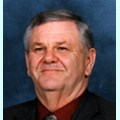 News and net reports in this section are from QRS Net Manager Dan AF4LB unless otherwise credited. Dan will handle all Net related material at this email address: Now our NAQCC QRS Nets schedule and activity report: NAQCC QRS Net
Sunday evenings local time which is Monday 0000Z on 3565 kHz.Date(UTC) NCS Participants 5/8/2011 AF4LB - 10 AF4LB N4JD AC8AP N8IUP VE3FUJ KM4VX K4OSO W2BEW KB1CKT N2YHQ NAQCC ET QRS Net (East Texas)
Monday evenings local time which is Tuesday 0000Z on 3564.5 kHz.Date(UTC) NCS Participants 5/3/2011 KE5YUM - 2 KE5YUM KE5YGA 5/10/2011 KE5YUM - 4 W5IQS KE5YGA KE5YUM N5UZ NAQCC EC QRS Net (East Coast)
Thursday evenings local time which is Friday 0130Z on 3565 kHz.Date(UTC) NCS Participants 5/6/2011 AF4LB - 4 AF4LB WA2JSG K9EYT W5IQS 5/13/2011 AF4LB - 1 AF4LB NAQCC PNW QRS Net (Pacific NorthWest)
Thursday evenings local time which is Friday 0200Z on 3574 kHz.Date(UTC) NCS ParticipantsAll frequencies are +/- QRM. For more net info, see CW Assistance/QRS Nets on the web site. 5. CW CARTOON OF THE MONTH: 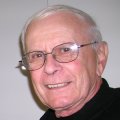 Let's take a comedy and/or nostalgia break now courtesy of Dick Sylvan W9CBT NAQCC #2062. Dick has been a long-time QRP/CW operator. One of his many talents is being a cartoon artist. Dick's cartoons appear monthly in the K9YA Telegraph, a free ham radio eZine, where he is staff cartoonist. The NAQCC is very honored to reprint Dick's cartoons originally published in the K9YA Telegraph. Dick has also authored a book entitled "Hi Hi - A Collection of Ham Radio Cartoons" available via his web site. A new cartoon has appeared in each of our even-numbered newsletters ever since their debut in Issue #058, November 17, 2007. 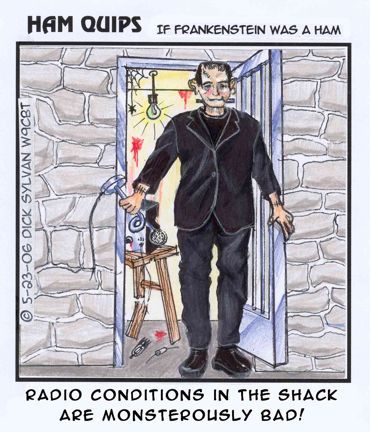 6. MEMBER SPOTLIGHT: 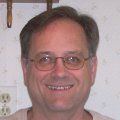 This section is managed by Paul N8XMS and any questions about it should go to John DeGood NU3E #1188 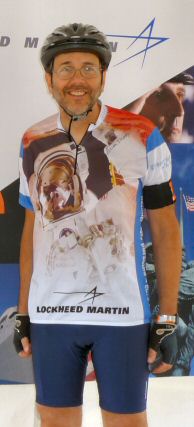 I became interested in radio and electronics in elementary school and spent countless hours experimenting with crystal radio sets. My favorite childhood book was "The Short-Wave Mystery" in the Hardy Boys series. As a Boy Scout I earned Electronics Merit Badge. Several neighborhood television repair shops let me scavenge old radio and television chassis from their trash, which I used as sources of electronic components. My only childhood exposure to ham radio was on a visit to my grandparents in Weiner, AR. I brought one of my crystal sets and was startled to hear very strong garbled speech in my headphones quite unlike anything I'd ever heard before. My uncle explained that Sonny Winters W5GTN lived in the house just behind my grandparents. Sonny graciously gave me a tour of his beautiful Collins station. I received my Novice license WN0GFF in December 1971 after attending a license class sponsored by the club station W0EEE during my first semester at the University of Missouri-Rolla. I assembled a simple CW station and used the steel fire escape on the side of my fraternity house as an antenna. I developed other college interests (a girlfriend) and allowed the 2-year non-renewable license to expire. After college I accepted a job with Hewlett-Packard in Avondale, PA. Co-worker David Hawk WA3KDQ administered my second Novice examination and I became WB3GNB in March 1977. I passed the General and Advanced Class amateur radio examinations at the FCC office in Philadelphia, PA in January 1978. At that time I lived in a basement apartment and using an indoor (i.e. underground!) HF antenna I managed only a single contact, to nearby amateur Ira Tartack WA3TNP. In June 1978 I moved to a rented townhouse in Newark, DE where I erected a Hy-Gain 18AVQ vertical in the tiny back yard. My neighbors referred to it as "Radio Free Newark" and I am sure they celebrated when I purchased a house in April 1980. In February 1989 I became NU3E after attending an Extra Class license study group taught by Fred Sowers NT3E of the AWARE radio club in Wilmington, DE. Since January 1995 I have worked and resided in NJ. My current CW QRP activities include NAQCC, FISTS, Polar Bear QRP Ops, NJQRP, and the David Sarnoff Radio Club and its 100% QRP Field Day. 7. NEWS ITEMS AND ARTICLES BY OUR MEMBERS: 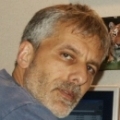 This section is a forum for you to tell other members what you've been up to on the ham bands or to submit an article dealing with some aspect of CW and QRP operation or equipment. Send your news items and articles to our news editor Paul KD2MX at 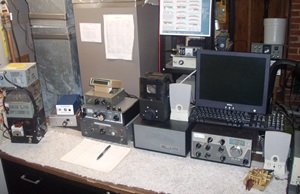 N9KR All Homebrew CW Position None of this work is completely original. Most ideas were borrowed as bits and pieces (sometimes large pieces) from other's work from many sources including QST and ARRL Handbook articles, Wes Hayward and Doug DeMaw writings, and the internet. Through trial and error, attempted enhancements, smoke and failure - something useful sometimes found its way into my homebrew shack. Most of my projects are built 'ugly' style using cast off parts and chassis wherever possible. I hope this will give an overview of the setup and a few starting point ideas for other's experimentation. A transmitter of some sort, which seems where most of us started, was my first 'useful' piece of gear. My transmitter is based on a simple Doug DeMaw design from the 1970s with a number of modifications added as I went along (5 MHZ VFO control, heterodyned with 2 MHz SA612 mixer, added buffer and amp stages, added IRF510 final amp stage). For a diagram of the 40 meter CW exciter click here. 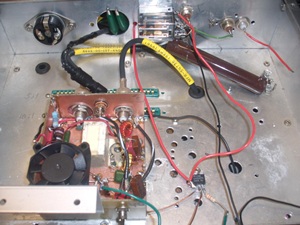 40 Meter 10 Watt IRF 510 amp section 50 ohm load resistor & relay (used for 'spotting' receiver) 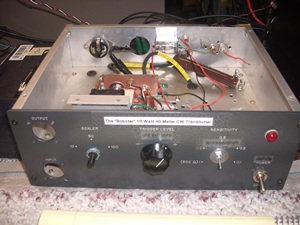 1-10 Watt Transmitter Front view - top cover removed (Base exciter module is hidden on under side of chassis) 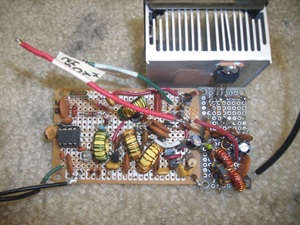 20 Meter version of the same basic transmitter module (Has IRF 510 amp attached) The FET Push-Pull IRF510 Broadband Amplifier is primarily the WA2EBY design and is fired up only when needed. I use 24-36 Volts generated from three old discarded PC power supplies in series. I like to 'go green and reuse parts whenever possible, part of the fun and challenge for me. This amp puts out about 60 Watts on 80 and 40 and drops to around 25 watts on 20. I never tried it on 30 but I do have the selectable output filter there if I ever come up with a 30-meter rig. 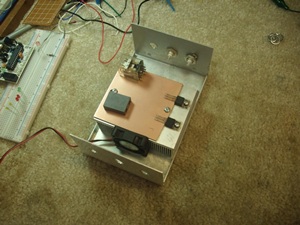 Initial layout. Used an old homebrew keyer chassis. Components will be installed 'ugly style'. Using large PC CPU heat sync. IRF 510 FETs (< $1.00 each) attached using thermal compound & insulators. 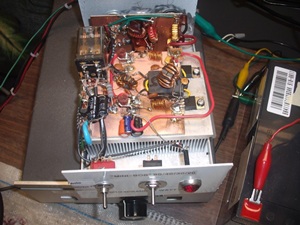 Nearly Complete in Testing The VFO is my own creation using the chassis and FET Oscillator components from an old HW-101 transceiver followed by a MPF 102 source follower buffer and a 2n2222 amplifier stage. Output is 4.95-5.5 MHz and is quite stable for an analog design. The combination QSK box and Simple Keyer has been a great addition. The full QSK breaking circuit is borrowed directly from Wes Hayward's writings. I used IRF530s instead of 830s and added an additional 2n7000 circuit for more isolation between RX and XMT ports. I achieved about 45db isolation with it. Also in the QSK box is a KD1JV simple keyer chip (about $2.00) with an outboard function switch on the front panel (to change speeds, transmit tone test, etc.). The chip also has a couple extra outputs (one is delayed) that work well for receiver mute (which I use). 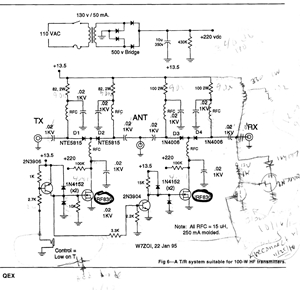 QSK Circuit - Wes Hayward 1995 Click the picture for a larger version  QSK Chassis partially completed. Will include Keyer with audio amp & sidetone, Receiver mute, & 50 db Rx Tx port isolation. 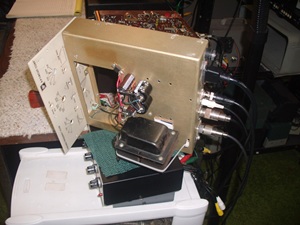 QSK Top Chassis showing power supply & rear connections The receiver is the latest piece to go 'live' and has been fun to create. It started out as a basic general coverage NE612 mixer superhet with 9 MHz IF. Three lowpass input filters have proven adequate to provide good coverage on 80-10 meters (although I use 40 almost exclusively). I built it with a four crystal Cohn-type ladder filter and enough audio out for earphones. 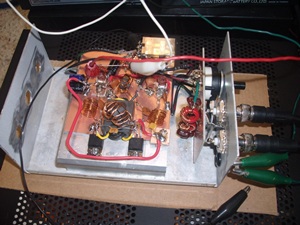 Filter switch board can be seen at right side in this pix. 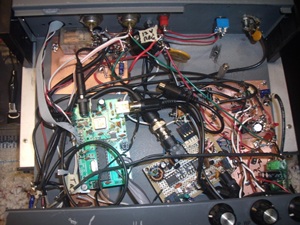 Receiver guts. Note the separate DDS VFO, Mixer & IF board, Audio Amp, Active Audio Filter, & Vox Delay type relay sections. I have tried both analog and a couple of DDS VFOs (N3ZI's and a SI-570-based frequency synthesizer) but settled on the N3ZI DDS2 kit because it works great with a front panel optical encoder and simulates a real analog tuning feel. Plus it doesn't need a computer interface to operate. Note: this DDS kit is the only sub-assembly that is not truly 'homebrew', however it is a reasonably priced terrific performer and in the overall scheme of things, fits my homebrew mantra nicely. Other features that I have added to the receiver include a LM386-based audio amp for good speaker audio and a two stage active audio filter (which made a huge difference in operating 'pleasure'). I added a MAR6 MMIC broadband amplifier right after the IF filters which boosted signal strength and sensitivity noticeably. A keyed mute circuit using 2n3906 and 2n7000 switches completely kills audio between dits for good QSK. My signal is still a little strong at the receiver to leave it in live without having to turn down the volume slightly (no agc yet). The digital display still needs a good enclosure. I thought readers might enjoy some pictures of my minimal key built onto the top of the rig and my most recent minimal antenna for that rig. It is just a 1/4 wave vertical built into a chassis PL-259 connector, I used a rope and small hammer to throw over a high tree branch and string up the radiating element. The radials are held to whatever is available with tie wraps. 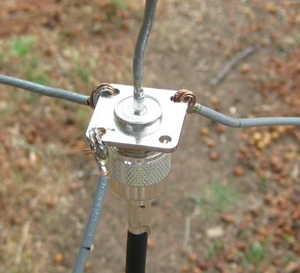 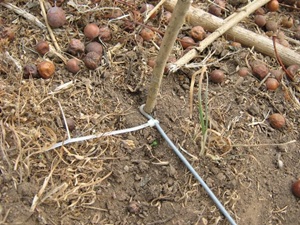 This is designed to be a portable, temporary antenna and is easy to quickly rebuild when necessary. It took me a while to get it down to about 1.5:1 SWR. I think I may have accidentally cut my radiator to the longer radial length as it seemed like I had to trim it quit a bit. I have not actually made any contacts with this one (hearing signals fine though), but back in 2000 I worked Scandinavia when my SST was putting out about 2w with a similar antenna. The only real difference was that one was held up a long fishing pole instead of being strung over a tree branch. The key is just a piece of double sided PC board attached with Velcro to the top of the case of my SST-20. I soldered a wire and a dab of protruding solder underneath to establish contact with the case which grounds the keying circuit. It took me a while to get the right width of Velcro and balance it so that it feels OK. It is not a perfect key, but I can do my usual casual 18wpm with it no problem. 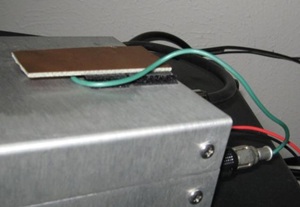 If you're interested and want more info DX and other QRP/CW matters, check my web site here. |
Club email address - The publication of our next newsletter will be announced via email to all members for whom we have a valid email address unless you specifically have unsubscribed from the email. Past on-line newsletters beginning with issue #042 are now archived on the site. So if you missed seeing any past issues, you can check them out in the archives. Unless otherwise credited, all items are written by K3WWP. If you came directly to this newsletter, we invite you now to browse the NAQCC Web Site. |